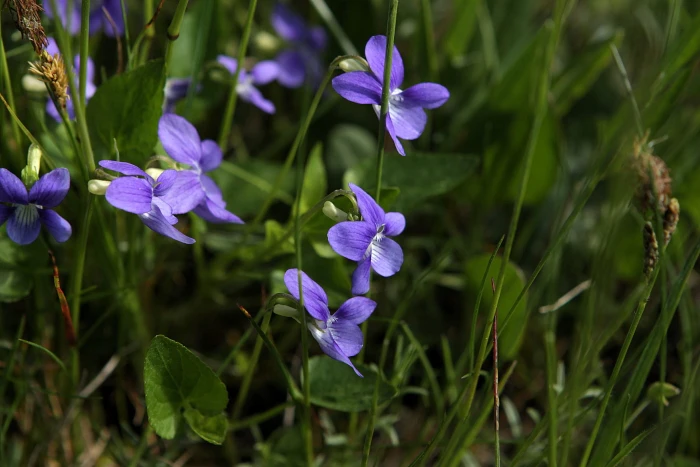Heath Dog-Violet
(Viola canina)
Heath Dog-Violet (Viola canina)
/
/

jfgodeau
CC BY-SA 4.0
Image By:
jfgodeau
Recorded By:
Copyright:
CC BY-SA 4.0
Copyright Notice:
Photo by: jfgodeau | License Type: CC BY-SA 4.0 | License URL: http://creativecommons.org/licenses/by-sa/4.0/ | Rights Holder: jfgodeau | Publisher: iNaturalist | Date Created: 2021-05-27T09:12:09-07:00 |




















Estimated Native Range
Climate Requirements for Rancho Cordova, California
| This Plant | Your Site | Plant Suitability for Your Location | ||
|---|---|---|---|---|
| • Precipitation | 4" - 139" | 20" | Your precipitation may be insufficient for this plant. Irrigate N" / year. | Irrigate N" / year |
| • High Temp. | 47°F - 94°F | 95°F | Your summers may be too hot for this plant. | Too hot |
| • Low Temp. | -39°F - 68°F | 38°F | Your winter temperatures are normal for this plant | Excellent |
This plant should grow well at your location with about N inches per year (Y minutes per month) of irrigation.
Summary
Viola canina, commonly known as Heath Dog-violet, is an herbaceous perennial native to a range of habitats across Europe and West Asia, including heaths, fens, and moist woodlands, with a particular affinity for acidic soils. It is often found in open, grassy areas, thriving in both full sun and partial shade. This violet typically grows to a modest height of 2-6 inches and is known for its delicate pale blue flowers, which bloom from April to July and are moderately showy, attracting pollinators such as bees and butterflies.
Heath Dog-violet is valued for its ability to form extensive colonies, creating a carpet of foliage and flowers that can be used effectively as ground cover in garden settings. It is also appreciated for its low maintenance requirements, needing only moderate watering and capable of growing in a variety of soil types, provided they are well-drained. In addition to its ornamental use, Viola canina has been used traditionally in herbal medicine, though its effectiveness for any specific ailment is not well-documented. Gardeners should be aware that while it is generally disease-resistant, it can serve as a host to pathogenic fungi such as Puccinia violae and Ramularia lactea, which may require management in a cultivation setting.CC BY-SA 4.0
Heath Dog-violet is valued for its ability to form extensive colonies, creating a carpet of foliage and flowers that can be used effectively as ground cover in garden settings. It is also appreciated for its low maintenance requirements, needing only moderate watering and capable of growing in a variety of soil types, provided they are well-drained. In addition to its ornamental use, Viola canina has been used traditionally in herbal medicine, though its effectiveness for any specific ailment is not well-documented. Gardeners should be aware that while it is generally disease-resistant, it can serve as a host to pathogenic fungi such as Puccinia violae and Ramularia lactea, which may require management in a cultivation setting.CC BY-SA 4.0
Plant Description
- Plant Type: Herb
- Height: 0.25-1 feet
- Width: 0.5-1 feet
- Growth Rate: Moderate
- Flower Color: Purple, Blue
- Flowering Season: Spring, Summer
- Leaf Retention: Deciduous
Growth Requirements
- Sun: Part Shade, Full Shade
- Water: Medium
- Drainage: Medium
Common Uses
Bee Garden, Border Plant, Butterfly Garden, Low Maintenance
Natural Habitat
native to a range of habitats across Europe and West Asia, including heaths, fens, and moist woodlands, with a particular affinity for acidic soils
Other Names
Common Names: Heath Dog-violet, Heath Violet
Scientific Names: Viola canina, Viola abulensis f. clandestina, Viola canina subsp. crassifolia, Viola canina var. minor, Viola guitteauae, Viola lactea var. ruppii, Viola lancifolia var. ruppii, Viola lucorum, Viola lucorum
GBIF Accepted Name: Viola canina